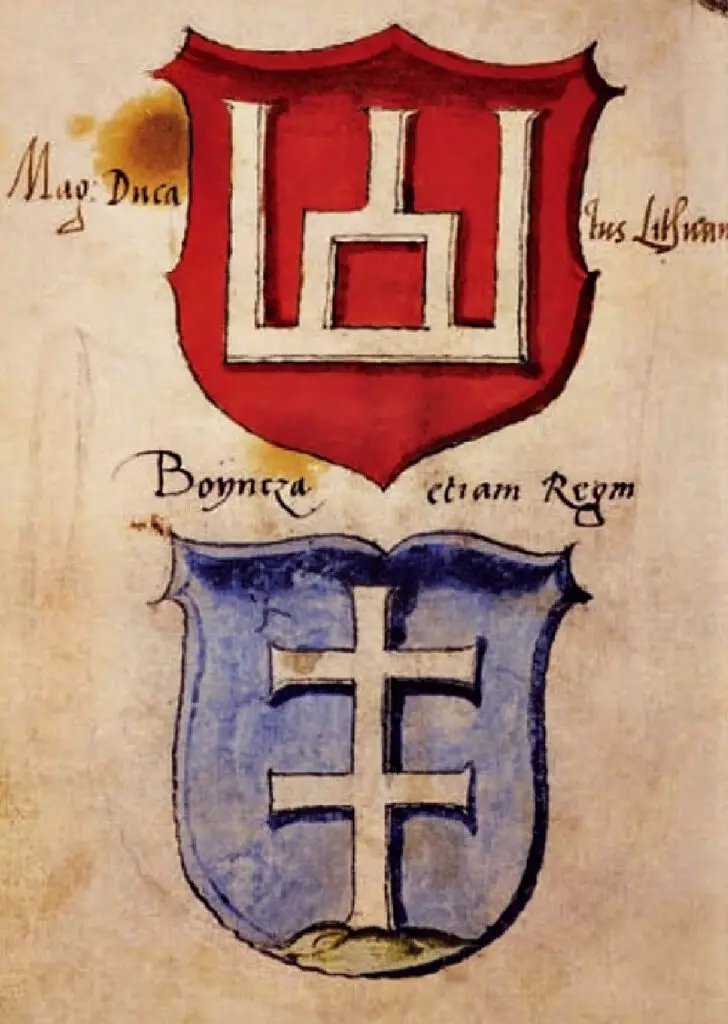Early Lithuanian Heraldry
The Grand Duke of Lithuania used the Columns of Gediminas as one of the most prominent symbols representing Lithuanian culture and authority. The descendants of the medieval Lithuanian ruler Kęstutis famously utilized the emblem. The name comes from the 14th-century Geminid dynasty, which used the columns as the central icon in their coat of arms.

The columns are supposedly derived from the castle gates at Trakai Peninsula, which Kęstutis built between 1350–1377. The castle was an important defensive fortification against the invasions of neighbouring Teutonic Knights. The symbol continued to be featured prominently in Lithuanian symbolism well into modern times.
After being annexed by the soviet union, Lithuanian nationalist graffiti frequently featured the symbol in protest of the Russian occupation. The symbol was so prominent that the Soviet Union eventually banned it. Today, the symbol is used in several emblems and coats of arms for military institutions in Lithuania.
Symbols Menu:» Amulet
» Ajna
» Arsenic
» Merkaba
» Hung
» Yin Yang
» bindi
» IK Onkar
» Khanda
» Halo
» jiahu
» Tau
» Uraeus
» Menorah
» Quincunx
» Tilaka
» Taijitu
» Vajra
» Chai
» Chi Rho
» Bagua
» Dragon
» Hunab Ku
» Caduceus
» Infinity
» Ichthus
» Hedjet
» Lauburu
» Om
» Ankh
» Chalice
» Pentacle
» Maat
» Ogham
» Mandala
» Kartika
» Khamsa
» Heart
» Labrys
» Sun Face
» Raven
» Triskele
» Scarab
» Dove
» Hanukia
» Anubis
» Trishula
» Durga
» Mezuzah
» Bay Tree
» Geruda
» Kinnara
» Quito
» Condor
» Blue Jay
» Falcon
» Makara
» Rosary
» Uluru
» Apsaras
» Hanuman
» Serpent
» Minotaur
» Mercury
» Apex
» Vestra
» Yoni
» Astarte
» dakini
» Calabash
» Mandrake
» Rebis
» Typhon
» Vegvísir
